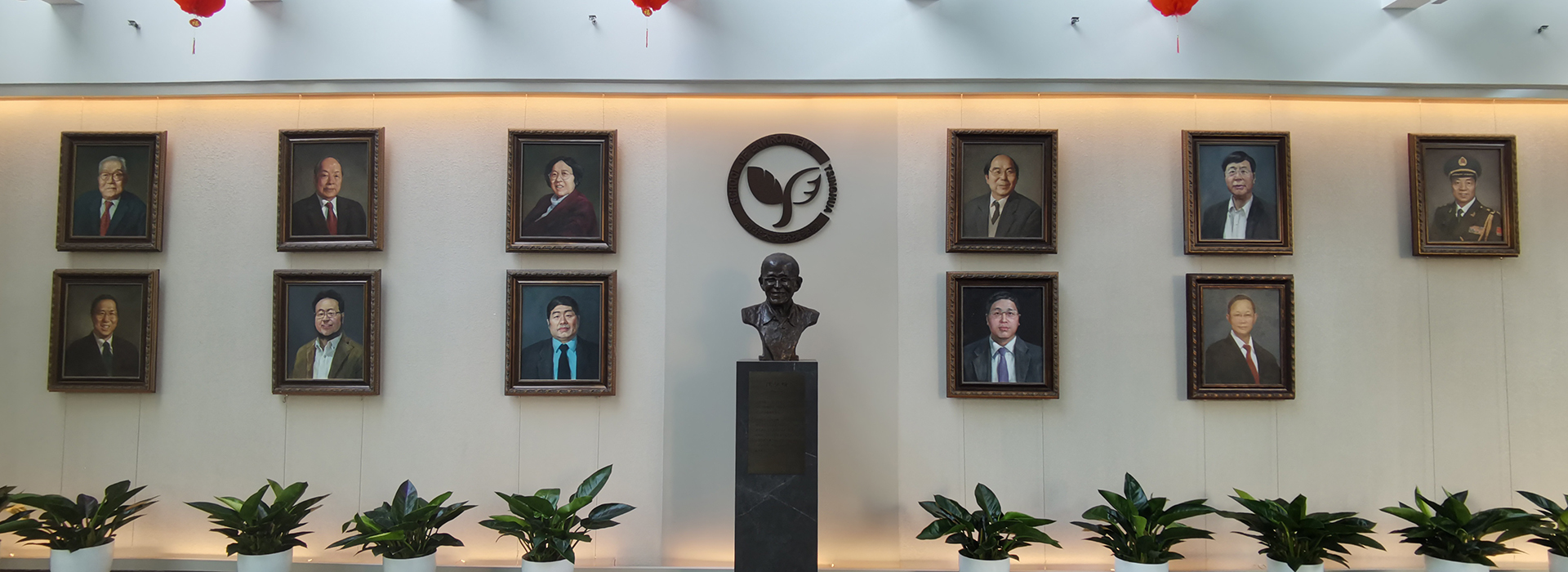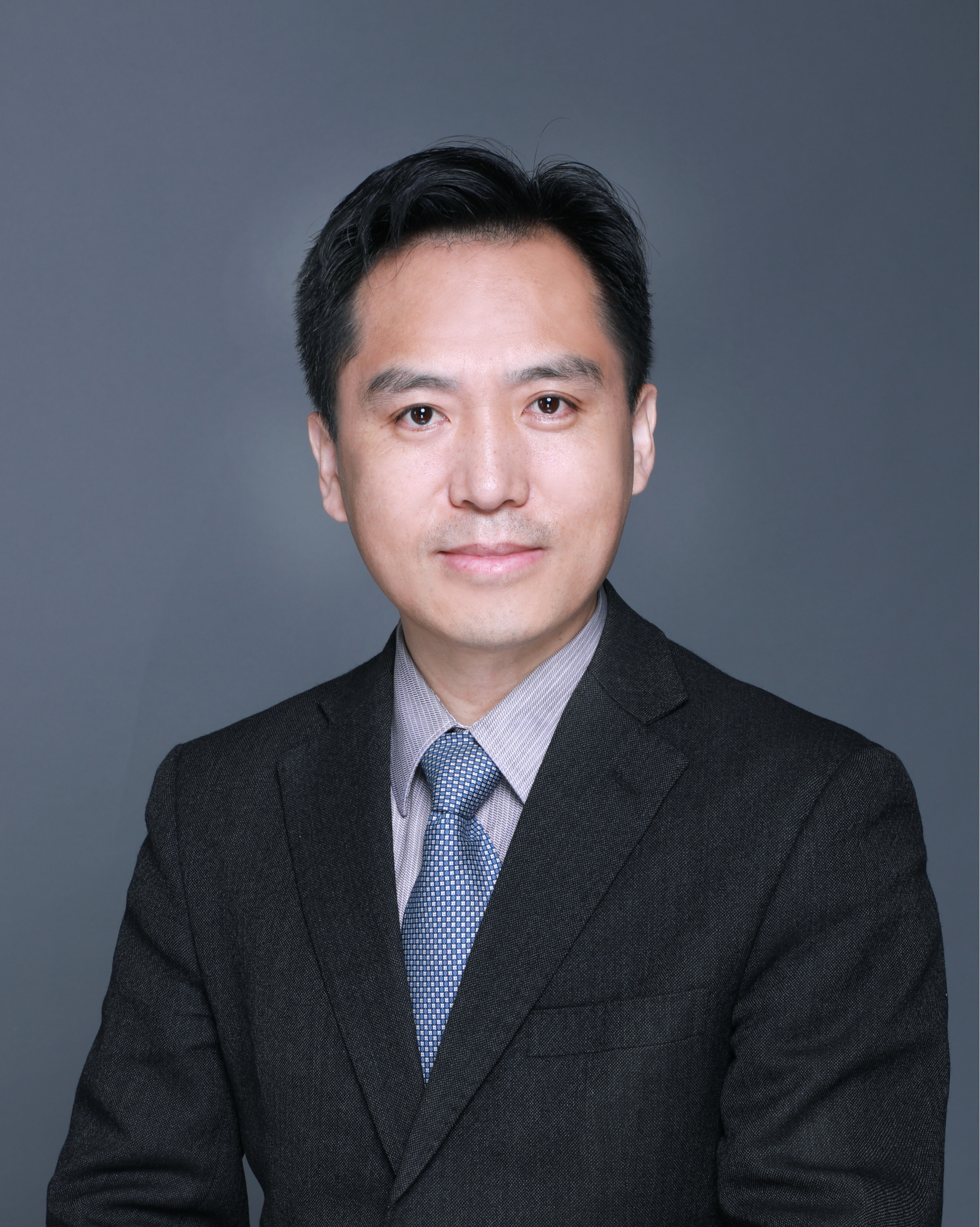1993.09 - 1997.07 学士学位,山东工业大学,土木工程
1997.09 - 1999.07 读研,山东工业大学,土木工程,因出国退学
1999.09 - 2004.07 博士学位,佩斯里大学(英国), 环境工程
本站不再支持您的浏览器,360、sogou等浏览器请切换到极速模式,或升级您的浏览器到 更高版本!以获得更好的观看效果。关闭

师资队伍

刘书明
教授,学院院长
 邮箱:shumingliu@tsinghua.edu.cn
邮箱:shumingliu@tsinghua.edu.cn
 电话:010-62787964
电话:010-62787964
 地点:北京市清华大学环境节能楼403
地点:北京市清华大学环境节能楼403

教育背景
1993.09 - 1997.07 学士学位,山东工业大学,土木工程
1997.09 - 1999.07 读研,山东工业大学,土木工程,因出国退学
1999.09 - 2004.07 博士学位,佩斯里大学(英国), 环境工程

工作履历
2002.12–2004.08 Research Assistant,University of Sheffield(英国)
2004.08–2006.03 博士后,Imperial College London(英国)
2006.04–2007.03 Research Fellow,University of Exeter(英国)
2007.03–2016.02 副教授,清华大学
2016.02–2018.12 副教授,环境学院副院长,清华大学
2018.12–2019.12 长聘教授,环境学院副院长,清华大学
2019.12–2023.07 长聘教授,环境学院党委书记,清华大学
2023.07 - 2023.09 长聘教授,环境学院院长、党委书记,清华苏州环境创新研究院院长,清华大学
2023.09至今 长聘教授,环境学院院长,清华苏州环境创新研究院院长,清华大学

学术兼职
中国水资源战略研究会理事(2016-)
高等教育给排水科学与工程专业评估委员会 副主任委员(2021-)
中国土木工程学会水工业分会副理事长(2023-)
中国城镇供水排水协会智慧水务专业委员会副主任委员(2020-)
中国城市科学研究会水环境与水生态分会委员(2017-)
住房和城乡建设部市政给水排水标准化技术委员会委员(2016-)
AQUA-Water Infrastructure, Ecosystems and Society(SCI期刊)主编(2020-)
Journal of Hydroinformatics(SCI期刊)编委(2013-)
IWA Water Loss Specialist Group常委(2018-)
IWA Water Loss Specialist Group - China Region主席(2017-)

教学工作
城市给水排水管道工程及设计(本科生)
Advanced Water Distribution System and Management(研究生)
Sustainable Management of Water Resource and Environment(研究生)

研究领域
供水管网领域:
管网水质保障理论与技术
管网漏损控制原理与技术
供水管网优化设计与管理
可持续性城市水管理:
韧性城市水系统
水-能源关系
城市水信息学

研究概况
国家第6批“万人计划”科技创新领军人才项目, 2022.1-2025.12
国家自然科学基金重大项目,重大疫情的生态环境风险综合评估与防控策略,2021.01-2025.12
国家重点研发计划,新型冠状病毒感染的肺炎疫情环境风险防控研究,2020.02-2021.01
国家自然科学基金国际合作项目,下一代供水管网优化设计与智能管理中韩联合研讨会,2019.07-2019.12
国家自然科学基金国际合作项目,迈向数字水务:大数据、人工智能和智能水务中英联合研讨会,2020.07-2021.06
国家自然科学基金面上项目,基于多源数据融合的供水DMA泄漏诊断机理与方法研究,2019.01-2022.12
国家水体污染控制与治理重大专项,大清河流域(白洋淀)水质目标综合管理示范研究,2018.01-2020.06
国家水体污染控制与治理重大专项,常州市供水管网水质安全保障与突发污染应急技术研究,2017.01-2020.06

奖励与荣誉
科研奖励
华夏建设科学技术奖一等奖“供水管网漏损系统性管控技术与装备”(2021)
北京市科学技术进步奖二等奖“市政水处理紫外线消毒与污染物控制关键技术研究及应用”(2020)
北京市科学技术进步奖二等奖“南水北调来水水质水生态风险应对关键技术研究与应用”(2019)
国家教学成果奖二等奖“多层次构建全球环境人才培养体系,全方法提升学生国际胜任力”(2018)
国家科学技术进步奖二等奖“城市集中式再生水系统水质安全协同保障技术及应用”(2018)
北京市高等教育教学成果奖一等奖“多层次构建全球环境人才培养体系,全方法提升学生国际胜任力”(2017)
环保部环境保护科学技术奖一等奖“城市大规模再生水系统多屏障高标准水质保障技术及应用”(2017)
荣誉称号
科技部中青年科技创新领军人才(2021)
中国环境科学学会水处理与回用专业委员会突出贡献奖(2020)
第七届《青年科技奖》 中国环境科学学会(2010)
中国科协‘青年科技奖’候选人特别提名 (2010)
清华大学第四届青年教师教学大赛二等奖 (2010)
全国五一劳动奖集体奖(2008)
首都劳动奖集体奖(2008)

学术成果
发表中英文论文190余篇,近几年论文如下:
英文期刊
2025
Xu, ZY, Liu, HX, Fu, GT, Zheng, R, Zayed, T, Liu, SM. Interpretable deep learning for acoustic leak detection in water distribution systems[J]. WATER RESEARCH, Published 2025, Volume 273
Ma, Xingke, Wu, Yipeng, Guo, Guancheng, Liu, Shuming, Xu, Yuexia, Fan, Jingjing, Wang, Hongbin, Xu, Liren. Leak detection in water supply networks using two-stage temporal segmentation and incremental learning for non-stationary acoustic signals[J]. Water Research X, Published 2025, Volume 29
2024
Zhang, HY, Dong, D, Chen, SC, Liao, J, Liu, DB, Zhang, XJ, Zhao, L, Wang, J, Liu, SM, Chen, C. Study on a new index for yellow water problem during source water switch and its application on one real project[J]. JOURNAL OF CLEANER PRODUCTION, Published 2024, Volume 435
Yu, XP, Wu, YP, Meng, FL, Zhou, X, Liu, SM, Huang, YJ, Wu, X. A review of graph and complex network theory in water distribution networks: Mathematical foundation, application and prospects[J]. WATER RESEARCH, Published 2024, Volume 253
Li, MF, Yang, SX, Fu, WJ, Wang, XM, Liu, SM, Huang, X, Li, J. Chlorine degradation of semi-aromatic polypiperazine-amide membranes and the mechanisms[J]. JOURNAL OF MEMBRANE SCIENCE, Published 2024, Volume 696
He, CY, Zhou, X, Huang, YJ, Shui, AL, Liu, SM. Disentangling the direct and indirect impacts of non-pharmaceutical interventions on production activities and carbon emissions[J]. SUSTAINABLE CITIES AND SOCIETY, Published 2024, Volume 106
Wang, ZQ, Gao, YW, Zhang, JS, Peng, ZG, Wang, XM, Liu, SM, Huang, X. Simultaneously Modulating Nanofiltration Membrane Surface Charges and Pore Size in Pursuit of Effective Cation Separation via a Bi-Functional Monomers-Interfered IP Reaction[J]. ACS ES&T ENGINEERING, Published 2024, Volume 4, Issue 5, Pages 1113-1122
Peng, Jinyu,Wang, Quanyong,Li, Zhenbang,Wang, Xiaomao,Liu, Shuming,Li, Yujiang,Xie, Yuefeng,Li, Yixuan. Pilot testing and engineering application of O3/H2O2 process for 2-methylisoborneol and geosmin removal in drinking water treatment[J]. Journal of Water Process Engineering[2214-7144], Published 2024, Volume 60
Wu, YP, Ma, XK, Guo, GC, Jia, TL, Huang, YJ, Liu, SM, Fan, JJ, Wu, X. Advancing deep learning-based acoustic leak detection methods towards application for water distribution systems from a data-centric perspective[J]. WATER RESEARCH[0043-1354], Published 2024, Volume 261
Wu, YP, Ma, XK, Guo, GC, Jia, TL, Huang, YJ, Liu, SM, Fan, JJ, Wu, X. Advancing deep learning-based acoustic leak detection methods towards application for water distribution systems from a data-centric perspective( vol 261, 121999, 2024) [J]. WATER RESEARCH, Published 2024, Volume 262
Zhou, X, Wan, X, Liu, SM, Su, KZ, Wang, W, Farmani, R. An all-purpose method for optimal pressure sensor placement in water distribution networks based on graph signal analysis[J]. WATER RESEARCH, Published 2024, Volume 266
Qin, XY, He, YT, Liu, SM, Shi, BY. Persistent free radicals in natural organic matter activated by iron particles enhanced disinfection byproduct formation[J]. WATER RESEARCH, Published 2024, Volume 266
Wu, YP, Liu, SM, Kapelan, Z. Addressing data limitations in leakage detection of water distribution systems: Data creation, data requirement reduction, and knowledge transfer[J]. WATER RESEARCH, Published 2024, Volume 267
Wu, YP, Xu, M, Liu, SM. Generative Artificial Intelligence: A New Engine for Advancing Environmental Science and Engineering[J]. ENVIRONMENTAL SCIENCE & TECHNOLOGY, Published 2024, Volume 58, Issue 40, Pages 17524-17528
He, CY, Wu, YP, Zhou, X, Huang, YJ, Shui, AL, Liu, SM. The heterogeneous impact of population mobility on the influent characteristics of wastewater treatment facilities[J]. JOURNAL OF ENVIRONMENTAL MANAGEMENT, Published 2024, Volume 366
Liao, Ziyuan, Liu, Shuming, Guo, Yali. Reducing linearization errors in the frequency domain analysis of fluid transients due to pipeline burst[J]. Engineering Applications of Computational Fluid Mechanics, Published 2024, Volume 18, Issue 1
Xie, YF, Wu, YP, Jin, Y, Li, YX, Zhao, B, Li, XY, Ba, ZR, Liu, SM. Energy-efficient and reliable coordinated scheduling for water distribution systems: enhancing hydraulic conditions and water quality[J]. AQUA-WATER INFRASTRUCTURE ECOSYSTEMS AND SOCIETY, Published 2024, Volume 73, Issue 11, Pages 2229-2241
Zhou, X, Man, YC, Liu, SM, Zhang, J, Yuan, R, Wang, W, Su, KZ. Leveraging multi-level correlations for imputing monitoring data in water supply systems using graph signal sampling theory[J]. WATER RESEARCH X, Published 2024, Volume 25
Zhang, T, Guo, HY, Wang, XM, Liu, SM, Hou, LA. Constructing Loose Nanofiltration-Featured Process for Micropolluted Water Treatment: Influencing Effect from the Residual Natural Organic Matter[J]. ACS ES&T WATER, Published 2024, Volume 5, Issue 1, Pages 113-121
2023
Huang, YJ, Meng, FL, Liu, SM, Sun, S, Smith, K. China?s enhanced urban wastewater treatment increases greenhouse gas emissions and regional inequality[J]. WATER RESEARCH, Published 2023, Volume 230
Zhao, LT, Liu, DB, Zhang, HY, Wang, J, Zhang, XJ, Liu, SM, Chen, C. Study on electrochemical reduction mechanisms of iron oxides in pipe scale in drinking water distribution system[J]. WATER RESEARCH, Published 2023, Volume 231,
Wu, Yipeng, Wang, Xiaoting, Liu, Shuming, Yu, Xipeng, Wu, Xue. A weighting strategy to improve water demand forecasting performance based on spatial correlation between multiple sensors[J]. Sustainable Cities and Society, Published 2023, Volume 93
Zhou, Xiao, Zhang, Juan, Guo, Shuyi, Liu, Shuming, Xin, Kunlun. A convenient and stable graph-based pressure estimation methodology for water distribution networks: Development and field validation[J]. Water Research, Published 2023, Volume 233
Liu, Mingyang, Li, Shuaiyong, Liu, Shuming, Guo, Guancheng, Cai, Mengqian, Dai, Zhengxu. Leak Location for Urban Elbowed Water Pipe Based on Complex-Optimized FastICA Blind Deconvolution[J]. IEEE Sensors Journal, Published 2023, Volume 23, Issue 4, Pages 4033-4042
Guo, Haoyu,Gao, Xiaoqi,Yu, Kaichang,Wang, Xiaomao,Liu, Shuming. Ion adsorption on nanofiltration membrane surface and its effect on rejection of charged solutes: A zeta potential approach[J]. Separation and Purification Technology, Published 2023, Volume 326
Wang, Zhiqiang, Gao, Yawei, Zhang, Jinsong, Peng, Zanguo, Wang, Xiaomao, Liu, Shuming, Huang, Xia. A serendipity of nanofiltration membrane modification using a simple approach: Limited sulfonamidation, remarkable improvements[J]. Separation and Purification Technology, Published 2023, Volume 322
Wu, Yipeng,Ma, Xingke,Guo, Guancheng,Huang, Yujun,Liu, Mingyang,Liu, Shuming,Zhang, Juan,Fan, Jingjing. Hybrid method for enhancing acoustic leak detection in water distribution systems: Integration of handcrafted features and deep learning approaches[J]. Process Safety and Environmental Protection, Publi
Yu, Xipeng, Wu, Yipeng, Zhou, Xiao, Liu, Shuming. Resilience evaluation for water distribution system based on partial nodes’ hydraulic information[J]. Water Research, Published 2023, Volume 241
Huang, Yujun, Xie, Yifan, Wu, Yipeng, Meng, Fanlin, He, Chengyu, Zou, Hao, Wang, Xiaoting, Shui, Ailun, Liu, Shuming. Modeling Indirect Greenhouse Gas Emissions Sources from Urban Wastewater Treatment Plants: Integrating Machine Learning Models to Compensate for Sparse Parameters with Abundant Observations[J]. Environmental Science and Technology, Published 2023, Volume 57, Issue 48, Pages 19860-19870
Ke, Yanchu, Sun, Wenjun, Liu, Shuming, Zhu, Ying, Yan, Shuang, Chen, Xiuli, Xie, Shuguang. Seasonal variations of biofilm C, N and S cycling genes in a pilot-scale chlorinated drinking water distribution system[J]. Water Research, Published 2023, Volume 247
2022
Ma, ZQ, Liu, SM, Guo, GC, Yu, XP. Hybrid Attention Networks for Flow and Pressure Forecasting in Water Distribution Systems Open Access[J]. IEEE GEOSCIENCE AND REMOTE SENSING LETTERS, Published 2022, Volume 19
Liu, Y, Liang, YX, Ouyang, K, Liu, SM, Rosenblum, DS, Zheng, Y. Predicting Urban Water Quality With Ubiquitous Data-A Data-Driven Approach[J]. IEEE TRANSACTIONS ON BIG DATA, Published 2022, Volume 8, Issue 2, Pages 564-578
Wang, XT, Li, JY, Liu, SM, Yu, XP, Ma, ZQ. Multiple Leakage Detection and Isolation in District Metering Areas Using a Multistage Approach[J]. JOURNAL OF WATER RESOURCES PLANNING AND MANAGEMENT, Published 2022, Volume 148, Issue 6
Zhou, Xiao, Liu, Shuming, Xu, Weirong, Xin, Kunlun, Wu, Yipeng, Meng, Fanlin. Bridging hydraulics and graph signal processing: A new perspective to estimate water distribution network pressures[J]. Water Research, Published 2022, Volume 217
Zhang, Haiya, Liu, Dibo, Zhao, Lvtong, Wang, Jun, Xie, Shuguang, Liu, Shuming, Lin, Pengfei, Zhang, Xiaojian, Chen, Chao. Review on corrosion and corrosion scale formation upon unlined cast iron pipes in drinking water distribution systems[J]. Journal of Environmental Sciences (China)[1001-0742], Published 2022, Volume 117, Pages 173-189
Xu, XY, Liu, SM, Sun, PF, Guo, ZR, Smith, K, Zhang, DX, Li, HS, Bedia, J, Belver, C. Iron tungstate on nano-gamma-alumina as photocatalyst for 1,4-dioxane solar degradation in water[J]. JOURNAL OF CLEANER PRODUCTION, Published 2022, Volume 377
He, Chengyu, Wang, Xiaoting, Shui, Ailun, Zhou, Xiao, Liu, Shuming. Is the virus-laden standing water change the transmission intensity of SARS-CoV-2 after precipitation? A framework for empirical studies Open Access[J]. Environmental Research, Published 2022, Volume 215
2021
Ma, Z, Liu, S*, Guo, G, Yu, X. Hybrid attention networks for flow and pressure forecasting in water distribution systems. Ieee Geoscience and Remote Sensing Letters, 2022, 19.
Liu, Y, Liang, Y, Ouyang, K, Liu, S, Rosenblum, D S, Zheng, Y. Predicting urban water quality with ubiquitous data-a data-driven approach. IEEE Transactions on Big Data, 2022, 8(2): 564-578.
Wang, Q, Guan, M, Huang, W, Wang, L, Wang, Z, Liu, S, Savic, D. Visualisation of the combinatorial effects within evolutionary algorithms: The compass plot. Journal of Hydroinformatics, 2021, 23(3): 517-528.
Smith, K, Liu, S*. Methodology for evaluating city-level energy footprint for water distribution systems. Journal of Cleaner Production, 2021, 288.
Liu, D, Cabrera, J, Zhong, L, Wang, W, Duan, D, Wang, X, Liu, S, Xie, Y F. Using loose nanofiltration membrane for lake water treatment: A pilot study. Frontiers of Environmental Science & Engineering, 2021, 15(4).
Guo, G, Yu, X, Liu, S*, Ma, Z, Wu, Y, Xu, X, Wang, X, Smith, K, Wu, X. Leakage detection in water distribution systems based on time-frequency convolutional neural network. Journal of Water Resources Planning and Management, 2021, 147(2).
Guo, G, Liu, S*, Jia, D, Wang, S, Wu, X. Simulation of a leak's growth process in water distribution systems based on growth functions. Aqua-Water Infrastructure Ecosystems and Society, 2021, 70(4): 521-536.
Beygi, S, Tabesh, M, Liu, S, Safarpour, H. Effects of considering social costs in different economic scenarios of water systems in iran. International Journal of Environmental Research, 2021, 15(5): 785-796.
2020
Zhang, X, Huang, J, Lin, L, Liu, S, Wang, Y, Zhang, S. A typical case study of the operational performance of municipal wastewater treatment plant in china. Asia-Pacific Journal of Chemical Engineering, 2020.
Zhan, X, Meng, F, Liu, S*, Fu, G. Comparing performance indicators for assessing and building resilient water distribution systems. Journal of Water Resources Planning and Management, 2020, 146(12).
Xu, X, Liu, S*, Smith, K, Cui, Y, Wang, Z. An overview on corrosion of iron and steel components in reclaimed water supply systems and the mechanisms involved. Journal of Cleaner Production, 2020, 276.
Xu, X, Liu, S*, Liu, Y, Smith, K, Wang, X, Li, J, Ma, Z, Wang, Z, Cui, Y. Water quality induced corrosion of stainless steel valves during long-term service in a reverse osmosis system. Journal of Environmental Sciences, 2020, 89: 218-226.
Xiong, Y, Zhang, J, Xu, X, Yan, Y, Sun, S, Liu, S. Strategies for improving the microclimate and thermal comfort of a classical chinese garden in the hot-summer and cold-winter zone. Energy and Buildings, 2020, 215.
Wu, Y, Liu, S*. Burst detection by analyzing shape similarity of time series subsequences in district metering areas. Journal of Water Resources Planning and Management, 2020, 146(1).
Wang, X, Guo, G, Liu, S*, Wu, Y, Xu, X, Smith, K. Burst detection in district metering areas using deep learning method. Journal of Water Resources Planning and Management, 2020, 146(6).
Lu, Z, Sun, W, Li, C, Cao, W, Jing, Z, Li, S, Ao, X, Chen, C, Liu, S. Effect of granular activated carbon pore-size distribution on biological activated carbon filter performance. Water Research, 2020, 177.
Li, S, Ao, X, Li, C, Lu, Z, Cao, W, Wu, F, Liu, S, Sun, W. Insight into ppcp degradation by uv/nh2cl and comparison with uv/naclo: Kinetics, reaction mechanism, and dbp formation. Water research, 2020, 182: 115967-115967.
Guo, G, Yu, X, Liu, S*, Xu, X, Ma, Z, Wang, X, Huang, Y, Smith, K. Novel leakage detection and localization method based on line spectrum pair and cubic interpolation search. Water Resources Management, 2020, 34(12): 3895-3911.
Dao, G, Wang, S, Wang, X, Chen, Z, Wu, Y, Wu, G, Lu, Y, Liu, S, Hu, H. Enhanced scenedesmus sp. Growth in response to gibberellin secretion by symbiotic bacteria. Science of the Total Environment, 2020, 740.
2019
Zhang, Y, Gao, X, Smith, K, Inial, G, Liu, S, Conil, L B, Pan, B. Integrating water quality and operation into prediction of water production in drinking water treatment plants by genetic algorithm enhanced artificial neural network. Water Research, 2019, 164.
Zhang, Q, Liu, S, Wang, T, Dai, X, Baninla, Y, Nakatani, J, Moriguchi, Y. Urbanization impacts on greenhouse gas (ghg) emissions of the water infrastructure in china: Trade-offs among sustainable development goals (sdgs). Journal of Cleaner Production, 2019, 232: 474-486.
Xu, X, Pliego, G, Alonso, C, Liu, S, Nozal, L, Rodriguez, J J. Reaction pathways of heat-activated persulfate oxidation of naphthenic acids in the presence and absence of dissolved oxygen in water. Chemical Engineering Journal, 2019, 370: 695-705.
Xu, X, Liu, Y, Liu, S*, Li, J, Guo, G, Smith, K. Real-time detection of potable-reclaimed water pipe cross-connection events by conventional water quality sensors using machine learning methods. Journal of Environmental Management, 2019, 238: 201-209.
Xu, X, Liu, S*, Sun, S, Zhang, W, Liu, Y, Lao, Z, Guo, G, Smith, K, Cui, Y, Liu, W, Garcia, E H, Zhu, J. Evaluation of energy saving potential of an urban green space and its water bodies. Energy And Buildings, 2019, 188: 58-70.
Xu, X, Liu, S*, Smith, K, Wang, Y, Hu, H. Light-driven breakdown of 1,4-dioxane for potable reuse: A review. Chemical Engineering Journal, 2019, 373: 508-518.
Xu, X, Liu, S*, Liu, Y, Smith, K, Cui, Y. Corrosion of stainless steel valves in a reverse osmosis system: Analysis of corrosion products and metal loss. Engineering Failure Analysis, 2019, 105: 40-51.
Xu, X, Liu, S*, Cui, Y, Wang, X, Smith, K, Wang, Y. Solar-driven removal of 1,4-dioxane using WO3/n-Al2O3 nano-catalyst in water. Catalysts, 2019, 9(4).
Wang, Y, Wu, Y, Du, Y, Li, Q, Cong, Y, Huo, Z, Chen, Z, Yang, H, Liu, S, Hu, H. Quantifying chlorine-reactive substances to establish a chlorine decay model of reclaimed water using chemical chlorine demands. Chemical Engineering Journal, 2019, 356: 791-798.
Wang, Q, Wang, L, Huang, W, Wang, Z, Liu, S*, Savic, D A. Parameterization of NSGA-II for the optimal design of water distribution systems. WATER, 2019, 11(5).
Wang, Q, Huang, W, Wang, L, Zhan, Y, Wang, Z, Wang, X, Zhan, X, Liu, S*. How are various surrogate indicators consistent with mechanical reliability of water distribution systems: From a perspective of many-objective optimization. Water, 2019, 11(8).
Smith, K, Guo, S, Zhu, Q, Dong, X, Liu, S*. An evaluation of the environmental benefit and energy footprint of china's stricter wastewater standards: Can benefit be increased? Journal of Cleaner Production, 2019, 219: 723-733.
Beygi, S, Tabesh, M, Liu, S. Multi-objective optimization model for design and operation of water transmission systems using a power resilience index for assessing hydraulic reliability. Water Resources Management, 2019, 33(10): 3433-3447.
2018
Smith, K., Liu, S.*, Liu, Y. Can China reduce energy for water? A review of energy for urban water supply and wastewater treatment and suggestions for change, Renewable & Sustainable Energy Reviews, 2018, 91: 41-58.
Wu, Y., Liu, S.* Distance-based burst detection using multiple pressure sensors in district metering areas, Journal of Water Resources Planning and Management, 2018, 144(11).
Guo, G., Liu, S.*, Wu, Y. Short-term water demand forecast based on deep learning method, Journal of Water Resources Planning and Management, 2018, 144(12).
Smith, K., Liu, Y., Wang, T., Liu, S.*, Liu Y.* City layout: A key to reducing energy use for water supply, Resources Conservation and Recycling, 2018, 138: 229-230.
Smith, K., Liu, S.*, Hu, H., Dong, X., Wen X. Water and energy recovery: the future of wastewater in China, Science of the Total Environment, 637-638, 2018, 1466-1470.
Clercq, D., Smith, K., Chou, B., Gonzalez, A., Kothapalle, R., Li, C., Dong, X., Liu, S., Wen, Z. Identification of urban drinking water supply patterns across 627 cities in China based on supervised and unsupervised statistical learning, Journal of Environmental Management, 2018, 223: 658-667.
Xu, X*, Pliego, G., Zazo, J.A., Liu, S., Casas, J.A., Rodriguez, J.J. Two-step persulfate and Fenton oxidation of naphthenic acids in water, Journal of Chemical Technology & Biotechnology, 2018, 93: 2262-2270.
Chen, Z., Yu, T., Ngo, H.H., Lu, Y., Li, G., Wu, Q., Li, K., Bai, Y., Liu, S., Hu, H. Assimilable organic carbon (AOC) variation in reclaimed water: Insight on biological stability evaluation and control for sustainable water reuse. Bioresource technology, 2018, 254: 290-299.
Wu, Y., Liu S.*, Smith, K, Wang, X. Using correlation between data from multiple monitoring sensors to detect bursts in water distribution systems, Journal of Water Resources Planning and Management, 2018, 144(2).
Xu, X.*, Pliego, G., Garcia-Costa, A.L., Zazo, J.A., Liu, S., Casas, J.A., Rodriguez, J.J. Cyclohexanoic acid breakdown by two-step persulfate and heterogeneous Fenton-like oxidation, Applied Catalysis B-Environmental, 2018, 232: 429-435.
2017
Wang T*, Liu S, Qian X, Shimizu T, Dente S, Hashimoto S, Nakajima J. Assessment of the municipal water cycle in China, Science of the Total Environment, 2017, 607: 761-770.
Smith, K., Liu S.* Energy for Conventional Water Supply and Wastewater Treatment in Urban China: A Review, Global Challenges, 2017,1: (5, SI).
Wu, Y., Liu S.* A review of data-driven approaches for burst detection in water distribution systems, Urban Water Journal, 2017, 14(9), 972-983.
Smith, K., Liu S.*, Liu, Y., Liu, Y., Wu, Y. Reducing energy use for water supply to China's high-rises, Energy and Buildings, 2017, 135, 119-127.
Smith, K., Li, Z., Chen, B., Liang, H., Zhang, X., Xu, R., Li, Z., Dai, H., Wei, C., Liu, S.* Comparison of sand-based water filters for point-of-use arsenic removal in China, Chemosphere, 2017, 168, 155-162.
中文期刊
2024
肖磊, 蒋瑜, 刘书明, 吴雪, 陈春芳. 二次供水流量预测模型的构建和应用[J]. 净水技术, Published 2024, Volume 43, Issue 05, Pages 71-79
肖磊, 李中伟, 刘书明, 陈春芳, 吴雪, 伍丽燕. 基于串级LSTM深度学习模型的二次供水余氯预测方法[J]. 净水技术, Published 2024, Volume 43, Issue 08, Pages 160-166
沈万峰, 陈琳, 郭世柏, 魏恒, 王昱锜, 郭驭, 王小,亻毛, 刘书明. 南方湖库型原水典型嗅味物质的臭氧/双氧水工艺去除特性研究[J]. 给水排水, Published 2024, Volume 60, Issue 11, Pages 48-55
陈超, 王玉, 谢宇煊, 汪隽, 林朋飞, 刘书明. 饮用水水质标准升级带来的消毒副产物挑战与对策[J]. 给水排水, Published 2024, Volume 60, Issue 9, Pages 7-14
2023
王晓婷, 吴以朋, 刘书明, 吴雪.基于FFB-LSTM的供水计量区超短时水量预测方法研究[J]. 给水排水, Published 2023, Volume 59, Issue 3, Pages 133-139
范晶璟, 耿冰, 刘书明. 基于水池(箱)余氯衰减规律的龙头水质提升策略[J]. 净水技术, Published 2023, Volume 42, Issue S1, Pages 76-79+92
周啸, 刘书明, 张娟, 陈司晗, 卢立宇, 吴雪. 供水管网漏损评定的二元水平衡分析理论探析[J]. 给水排水, Published 2023, Volume 59, Issue 12, Pages 124-129
2022
刘书明, 徐强, 信昆仑, 郭军, 郭冠呈, 沈建鑫, 吴雪, 李强祖, 王晓婷, 赵晔, 周啸, 吴以朋, 强志民. 供水管网漏损系统性管控技术与装备[J]. 建设科技, Published 2022, Issue 7, Pages 117-119
刘书明. 科学开展漏损控制推进供水基础设施高质量发展[J]. 给水排水, Published 2022, Issue 5, Pages 125-127+133
李俊禹, 刘书明, 吴雪, 谢涛, 金晔. 基于动态剪枝的城市供水管网优化调度算法[J]. 环境工程[1000-8942], Published 2022, Issue 6, Pages 226-232+153
周啸, 刘书明, 王春艳. 典型居民水表计量误差曲线拟合及性能分析[J]. 给水排水, Published 2022, Volume 58, Issue 7, Pages 27-31
吴雪, 肖磊, 刘书明. 基于余氯的龙头水水质保障思考与实践[J]. 给水排水, Published 2022, Volume 58, Issue 9, Pages 25-30
2021
吴以朋, 刘书明, 赵乐军. 供水管网计量区水量数据的特征分析. 给水排水, 2021, 57(05): 116-121+127.
李若楠, 王琦, 刘书明. 基于典型相关系数和随机森林的水质预警方法. 中国环境科学, 2021, 41(09): 4457-4464.
徐熙焱, 刘书明, 吴雪. 球墨铸铁水表内腐蚀层特征及其金属释放特性研究. 给水排水, 2021, 57(S1): 441-446.
刘书明. 饮用水管网输配过程中颗粒物与微量污染物的复合污染效应及其水质风险. 环境工程学报, 2021, 15(01): 1-2.
郭冠呈, 刘书明, 于喜鹏, 等. 不平衡样本下基于高斯混合生成模型的泄漏检测方法. 给水排水, 2021, 57(02): 145-150.
2020
张娟, 牛豫海, 张自力, 刘书明, 张强, 张士民, 刘堪平. 超滤膜短流程工艺处理南水北调原水的运行效能. 中国给水排水, 2020, 36(23): 37-41.
詹栩怡, 刘书明, 于喜鹏, 肖磊, 吴雪. 供水管网韧性评估方法研究. 给水排水, 2020, 56(06): 141-145.
吴雪, 肖磊, 孟凡琳, 李俊禹, 刘书明. 常州市供水管网余氯分布规律研究. 给水排水, 2020, 56(08): 121-125.
吴雪, 肖磊, 刘书明, 王兴双, 陈春芳, 蒋瑜. 常州市小区内余氯降解规律研究. 给水排水, 2020, 56(10): 98-103.
苏炯恒, 王琦, 王礼炳, 黄稳, 王志红, 刘书明. 考虑成本-弹性-水质的供水管网多目标协同设计方法. 中国给水排水, 2020, 36(21): 58-65.
2019
刘莹, 刘书明, 徐熙焱, 李若楠, 任宏刚. 再生水与自来水管道错接事故探测方法. 给水排水, 2019, 55(01): 127-132.
代焕芳, 刘书明, 吴雪. 供水管网背景漏失指数研究. 中国给水排水, 2019, 35(11): 59-62.
陈卓, 胡洪营, 吴光学, 吴乾元, 刘书明, 文湘华. ISO《城镇集中式水回用系统设计指南》国际标准解读. 给水排水, 2019, 55(03): 139-144.
2018
陈卓, 吴乾元, 杜烨, 孙艳, 陆韻, 杨宏伟, 刘书明, 胡洪营. 世界卫生组织《再生水饮用回用:安全饮用水生产指南》解读. 给水排水, 2018, 54(06): 7-12.
郭冠呈, 刘书明, 李俊禹, 周韧, 朱晓耘. 基于双向长短时神经网络的水量预测方法研究. 给水排水, 2018, 54(03): 123-126.
2017
刘书明, 吴以朋, 王晓婷, 刘友飞, 李佳杰. 应用聚类算法识别供水管网爆管事故.清华大学学报(自然科学版), 2017, 57(10): 1096-1101.
刘书明, 吴以朋, 车晗. 利用自识别的供水管网监测数据质量控制. 清华大学学报(自然科学版), 2017, 57(09): 999-1003.
刘莹, 于影, 石宝友, 刘书明, 吴雪. 供水管网铁释放的影响因素相对重要性分析. 环境科学, 2017, 38(12): 5090-5096.
余康华, 崔勇, 张子潇, 裴超迎, 刘书明. 水泥砂浆内衬管输配高品质再生水水质变化规律. 中国给水排水, 2017, 33(13): 50-55.
刘书明, 李婷婷, 王晓婷, 吴雪. 自适应遗传算法在给水管网优化中的应用. 给水排水, 2017, 53(04): 107-110.
书籍著作
《Reducing Energy for Urban Water and Wastewater: Prospects for China》,Kate Smith, Shuming Liu, IWA Publishing, 2019.
《水表与供水计量》,国际水协中国漏损控制专家委员会,中国建筑工业出版社,2018.10.
《供水管理与漏损控制》,国际水协中国漏损控制专家委员会,中国建筑工业出版社,2017.9.
《给水管网系统》,刘书明,王荣合,吴雪,高等教育出版社,2014.1.
地址 : 北京市海淀区清华大学环境学院
邮编 : 100084
邮箱 : hjx@tsinghua.edu.cn
电话 : +86-10-62784521
传真 : +86-10-62785687

环境学院公众号

本科生公众号

研究生公众号
Copyright © 2017 清华大学环境学院 版权所有
